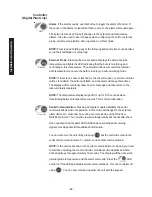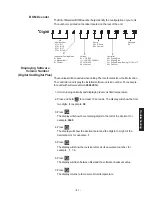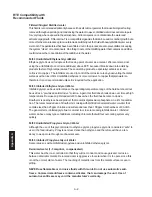
- 33 -
Section IV Basic Maintenance
To avoid electrical shock, disconnect the mains cord prior to removing
any access panels or covers.
Service Contracts
Thermo offers on-site Service Contracts designed to provide extended life and
minimal down-time for your unit. For more information, contact our Service
Department (see Preface, After-sale Support).
Reservoir Fluid
Periodically inspect the reservoir fluid. If cleaning is necessary, flush the
reservoir with a cleaning fluid compatible with your application.
The reservoir fluid should be replaced periodically. Frequency depends on the
operating environment and time of usage.
Before changing the cooling fluid ensure it is at a safe handling tem-
perature.
Reservoir Cleaning
Routine cleaning can be achieved by simply sponging down the seamless
stainless steel tank with tap water. (Dish washing detergent may be used but
the tank must be thoroughly rinsed.)
Algae
To restrict the growth of algae in the bath, we recommend that all circulation
lines be opaque. This will eliminate the entrance of light required for the growth
of most common algae.
We recommend the use of Chloramine-T, 1 gram per 3½ liters.
Condenser Cleaning
For proper operation, the unit needs to pull substantial amounts of air through
a condenser. A build up of dust or debris on the fins of the condenser will lead
to a loss of cooling capacity.
Periodic vacuuming of the condenser is necessary. To access the condenser
the front grille must be removed.
The unit must be turned off before the front panel is removed.
All units have a one-piece condenser grille assembly held on by spring clips.
Carefully pull forward on the bottom of the panel to remove it.
The cleaning frequency depends on the operating environment. After initial
installation, we recommend a monthly visual inspection of the condenser.
After several months, the cleaning frequency will be established.
Maintenance
















































